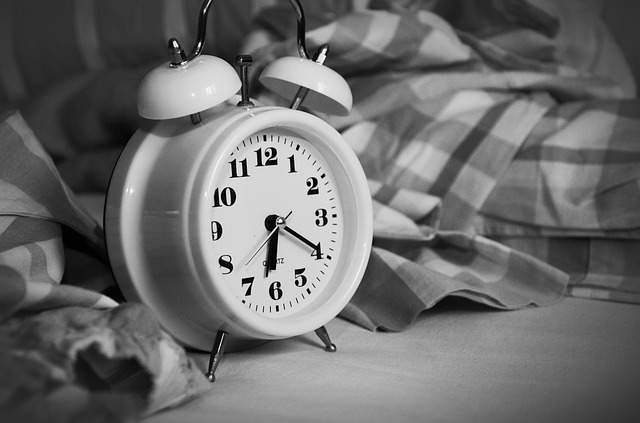Last Updated on: 22nd November 2023, 03:38 pm
Over half (54 per cent) of us struggle to get to sleep at night and 10 per cent of us experience insomnia according to AXA PPP healthcare’s third annual State of the Nation online survey with YouGov*.
With the number of reported sleep problems on the rise, it’s no secret the nation is struggling to sleep at night. In a bid to help this growing issue, healthcare cover provider AXA PPP healthcare has taken the essence of the humble lullaby and given it a 21st Century reinvention using the latest in artificial intelligence technology and leading musical composition. The outcome? Two new, modern musical lullabies to help us sleep better.
Lullabies have been used, across cultures, since 2000BC to lull us to sleep. Lulling is the process of sending a person into slumber, typically through soothing sounds or movements and most commonly associated with parents singing to babies.
By examining the components of popular lullabies, AXA PPP healthcare has produced two lullabies that can be enjoyed by adults or children. The difference is that one has been composed and played by humans and the other created by an Artificial Intelligence machine.
Leading musician and academic, Bede Williams, who is Head of Instrumental Studies at the University of St Andrews, commissioned internationally renowned composer of contemporary classical music, Eddie McGuire to write an original lullaby. They created ‘Lyrical Lullaby’ which was recorded at the Royal Conservatoire of Scotland and it brings together an interpretation of what a modern lullaby, to ease adult or child to sleep, would be.
How we process music and how it helps us to get to sleep can be understood from a number of different perspectives. There are numerous studies from a neuroscientific perspective highlight how listening to music can induce real emotions, which Williams discusses.
“Parts of our brain that are related to emotion have a direct line between each other and in doing so, music can therefore literally enter into us and influence the way we feel. An important part of this process is how our understanding of music is connected to body movement or embodied cognition. Fast, lively music makes us want to move, whilst slow, sedate music helps us wind down.
Lots of people report of a falling sensation as they fall asleep, and many lullabies mimic this by containing melodies made up of descending patterns in the notes. Lyrical Lullaby has this essential feature and many other musical devices which can induce in us a state of restfulness.” [Bede, Williams]
In a complete contrast to how Lyrical Lullaby was developed, the second piece of music, simply called Lullaby, has been developed through a revolutionary artificial intelligence process that can compose music without human input. Jukedeck’s technology uses deep learning, which is based on layers of artificial neural networks inspired by the structure of the brain. The networks are trained on sheet music in computer-readable format from which they learn the elements of music, such as melody, harmony, rhythm, and structure.
Founder and CEO, Ed Newton-Rex, discusses how the machine developed a track that was as close in harmony and structure to that of a human lullaby.
“An artificial neural network is essentially a representation of the neurons and synapses in the human brain – and, like the brain, if you show one of these networks lots of complex data, it does a great job of finding hidden patterns in that data. We showed our networks a large body of sheet music, and, through training, it reached the point where it could take a short sequence of notes as input and predict which notes were likely to follow. Once a network has this ability, it essentially has the ability to compose a new piece, as it can choose notes to follow others it’s already composed.
We trained our networks on traditional folk music, because folk music and lullabies share lots of the same musical elements. When the system had composed the lullaby in sheet music form, we had a human producer turn that sheet music into an audio track, as we think AI is at its best when computers and people work together.” [Ed, Newton-Rex]
Understanding why we sometimes struggle to sleep and how we can help ourselves sleep better is something that Dr Mark Winwood, Director of Psychological Services for AXA PPP healthcare, helps patients with on a regular basis.
“Lulling is certainly not a new technique, and any parent will have some understanding of the mesmerising effect singing a lullaby can have to help a baby or child drift off to sleep. So why not apply the same approach to adults? Many people struggle to drift off to sleep every night, whether this is from a sleep disorder such as insomnia or due to short term factors in an individual’s life that is impacting their ability to sleep.
“Music can be used to reduce sympathetic nervous system activity; decrease anxiety, blood pressure, heart and respiratory rate; and possibly have positive effects on sleep in regards to muscle relaxation and distraction from trivial thoughts.” [Dr Mark, Winwood]
In general, adults need between seven and nine hours of sleep but the exact amount varies from person to person. Different people need different amounts of sleep, and this depends on your age, your lifestyle, your genes and what you’re used to.
To download or listen to AXA PPP Healthcare’s Lullaby collaboration, visit the website, www.axappphealthcare.co.uk/sleep or download of SoundCloud: https://soundcloud.com/axappphealthcare
*Survey by YouGov on behalf of AXA PPP healthcare. All figures, unless otherwise stated, are from YouGov Plc. Total sample size was 2,094 adults. Fieldwork was undertaken between 29–30 November, 2016. The survey was carried out online. The figures have been weighted and are representative of all GB adults (aged 18+).







